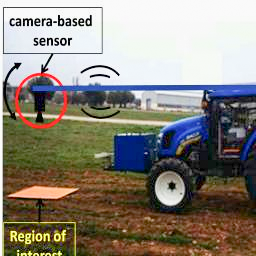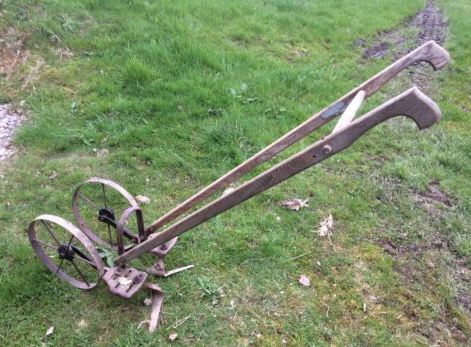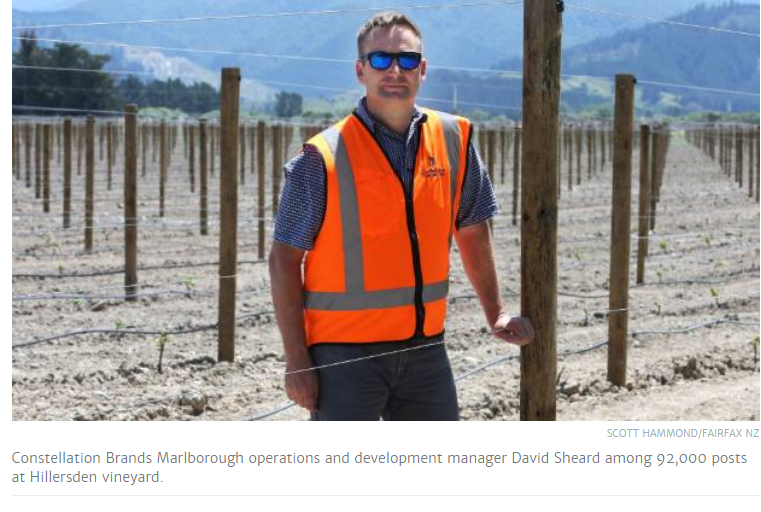- Home
- The Lounge
- Discussions
- Re: What Can Technology Make Better and What Can I...
- Re: What Can Technology Make Better and What Can I...
What Can Technology Make Better and What Can It Not Replace?
Copy link to clipboard
Copied
Is better to talk to a person or do you prefer Alexa?
Some of Marriott’s hotel brands are getting amazon’s Alexa in the guest rooms. Some people have privacy concerns. While other people have adopted Alexa and made her part of their family. So talking to her on vacation might be like feeling at home?
Examples of Alexa’s hospitality uses include ordering room service or asking the device what the swimming pool hours are, today. However, some hotel brands require the human touch. They want you to talk to the Guest Service Representatives (GSRs) and other hotel staff. Some of those hotels don’t even have automated phone answering directories. They want people to answer the phone, after a specific number of rings, and talk to you.
What do you think? Is an Alexa or a Siri a better friend of yours than your hotel’s staff?
As a creative professional, you can paint great things in Adobe Photoshop, but can you do it without knowing what happened, centuries ago, in oil paint and watercolor?
When you create vector art, in Adobe Illustrator, do you remember how a T-Square worked on a drawing board?
How about making amazing special effects happen in Adobe Premier Pro? Do you know about splicing film clips together?
When does technology make our world richer and when does it become an excuse for a business to hire less staff?
In some hotels, the GSR is expected to not just check us in, but to come out from behind the front desk, show us around, and make sure our day is going a little bit better than when we walked through the front door. After an insane day of travel, maybe we need a warm handshake, a sincere “thank you,” a complementary bottle of wine, some freshly brewed coffee and conversation, or even a heartfelt hug.
Can Alexa do that, too?
Copy link to clipboard
Copied
Brian is that a non sequitur? The alternatives do not have to be mutually exclusive — you can use both according to context.
Do content creation professionals tend to be gadget loving geeks? Alexa and Google Home are certainly useful, but they are also fun. You know you are being daft when saying goodnight to Alexa, and it often leads to bizarre conversations between Alexa and my wife and I, trying to think up silly questions for her(it). This invariably makes us laugh, which is not a bad note to go to sleep on.
I'd love the option of asking Alexa for a near instant response to the sort of question that would drive the hotel front desk crazy having answered it 100 times that week. If it is not that sort of question, then pick up the phone, but you might have to wait. There is also the Smart Home aspect of these devices. It is often convenient asking Alexa to turn such and such a light on or off, or to dim it. It is equally convenient asking Alexa to play a particular song while you are in the kitchen with your hands covered in flower, or ask her to pause when the phone goes. I like adding items to the shopping list as you think of them, and reading them off my phone when I get to the shops.
On the minus side, Alexa is a bit of a pedant when it comes to syntax. Get your words in the wrong order, and comes over all dumb. Then there is the family whose young daughter managed to buy items from Amazon with no control. (Note: you can turn voice orders off). Another couple discovered that Alexa had recorded their conversation, and emailed it to someone unknown to either of them. That person contacted the couple who did not believe it, until he read some of their conversation back to them.
Alexa is still being developed, and will get smarter, so I don't know how far away we are from the first Terminator. I didn't have to make this image. It was already out there on Google, so people have already had this thought

Copy link to clipboard
Copied
non sequitur?
It's a "a conclusion or statement that does not logically follow from the previous argument or statement."
Copy link to clipboard
Copied
Not at all related to Alexa
My wife can take a picture of a plant with her cell phone and send it to other people who know more about plants, to have them send her back the name of the plant
But she still has to pull weeds with her hands, not her cell phone
Copy link to clipboard
Copied
https://forums.adobe.com/people/John+T+Smith wrote
My wife can take a picture of a plant with her cell phone and send it to other people who know more about plants, to have them send her back the name of the plant
But she still has to pull weeds with her hands, not her cell phone
That's a real good example of where technology has assisted us greatly. Janet trained to become a Master Gardener in the late 1990s. That's a program relative to Land Grant colleges and Agricultural Extension Offices. Part of her training was spending something like 50 hours in those offices helping people with their questions and challenges. Today's technologies do make plant identification and problem resolution far better than back when she trained.
But, when someone's tomato crop is getting a white fuzziness on it, they still need an Extension Agent to take a look at it and advise the person on whether the food source is safe and suggest remedies, if needed.
Copy link to clipboard
Copied
https://forums.adobe.com/people/John+T+Smith wrote
But she still has to pull weeds with her hands, not her cell phone
I believe that facial recognition is huge in China. It's probably ridiculous to think that affects more than a fraction of the 1.3 billion people who live in China, but I bet that a good proportion of the 24 million inhabitants of Shanghai are identified by a computer on a daily basis. So it sure wouldn't be hard to train a computer recognise one plant from another, and instruct a robotic arm to remove the 'weeds'.
It might not even need to remove the weeds, but rather zap them with a laser, causing enough damage to stop them growing, but leaving them to decompose and feed the good plants. That would save having to handle the debris, so a win win. Hmmm... what are the chances that Google is going to tell me that computer aided weeding (CAW) is old hat?
Yes, of course it has been done.

You just need a camera/sensor bolted top the front of your tractor. A disappointingly clunky arrangement IMHO, and it might be a squeeze to fit it into John's garden.

Looking at that first picture of the Tillet Weeder reminds me of growing up on a farm (market garden) and walking goodness knows how many miles pushing one of these (cunningly called a 'push hoe'). I don't remember it being particularly hard work amazingly, so it must have kept us fit (I have four brothers who all worked on the farm growing up).

Hey, I think I have a picture. ![]() How about that, I found it 🙂 My brother Geoff in the green jumper.
How about that, I found it 🙂 My brother Geoff in the green jumper.

Brian, I was thinking of using Photoshop to mount cameras onto the push hoes, but the picture is from the mid 60s, and a Box Brownie wouldn't be very convincing. So I'll give your thread back. ![]()
Copy link to clipboard
Copied
Trevor.Dennis wrote
It might not even need to remove the weeds, but rather zap them with a laser, causing enough damage to stop them growing, but leaving them to decompose and feed the good plants. That would save having to handle the debris, so a win win. Hmmm... what are the chances that Google is going to tell me that computer aided weeding (CAW) is old hat?
I thought only Janet & I would be the only people in a Adobe forum which would find this stuff fascinating.
For those who do not know, John Deere and Caterpillar have lead the way in agricultural and construction tools which are very tuned into Autodesk apps. So, we can create a technical drawing in Adobe Illustrator, output the thing to AutoCAD, and within minutes, revised specs are coming into the operators of those big machines, out on a job site.
Copy link to clipboard
Copied
Brian, it is fascinating seeing a newly set up vineyard here. They use Differential GPS which uses ground level GPS transmitters to supplement the satellites giving them millimeter accuracy. A huge tracked machine then puts in the thousands of posts to an accuracy of 15mm. No one drives the machine, but they do need real people to feed the posts.
When done, and before the vines are planted, driving past shows you the perfect alignment, and different patterns emerge as you move past. As well as the perfectly straight rows, the spot on spacing means that 45° alignment is also perfect. It's a bit spooky truth be told. This image shows I was underestimating how many posts a big vineyard uses!

I had to check the location, and it is way up the Wairau Valley in area far less well suited to growing grapes than the central valley where I live, but there is so much money to be made, they plant further and further out. The population of Marlborough is just 46,000 — similar in size to Connecticut, except 3.5 million people live in that state! This leads to a major shortage of manual labour, so they bring thousands of workers in from the Pacific Islands like these lads from Tonga. They get paid by the number of plants they prune, or strip or wrap etc., and I've watched them _run_ from plant to plant. This is not to say there is not a great deal of automation in the grape business, but it is still very labour intensive. The Islanders make, what for them, is serious money, and there is a lot of competition to get on the scheme (It is called the Seasonal Workers Scheme).

Copy link to clipboard
Copied
Trevor.Dennis wrote
Brian, it is fascinating seeing a newly set up vineyard here. They use Differential GPS which uses ground level GPS transmitters to supplement the satellites giving them millimeter accuracy. A huge tracked machine then puts in the thousands of posts to an accuracy of 15mm. No one drives the machine, but they do need real people to feed the posts.
Thank you so much for this Trevor. I've read about this kind of thing.
t's been almost 20 years since Janet & I had a winery account. At the time, high yield viticulture was just establishing itself. I love seeing where its going. I took a few days to ponder this. Something inside me wants to investigate it more. This is where technology makes a wine fascination all the more compelling.
Copy link to clipboard
Copied
Technology cannot be trusted to replace paper ballots.
A child hacked a replica of Florida’s voting system in 10 minutes - Vox
Copy link to clipboard
Copied
https://forums.adobe.com/people/Nancy+OShea wrote
Technology cannot be trusted to replace paper ballots.
A child hacked a replica of Florida’s voting system in 10 minutes - Vox
This is a good example of the technology of cybersecurity went from something I once understood real well, 10 or so years ago, to being something which moved forward faster than I could keep up.
I would hope the voting mechanics of democracy is deeply invested in the best cybersecurity, but I would not bet everything on that. It requires the investment of tax revenues. How much do citizens want that to happen?
Copy link to clipboard
Copied
Either the cyber security people are weak or the public is getting smarter. As mentioned above that a kid hacked a replica, there are others who can do it for real. The security measures are just not a lot, carelessness and laziness is a disease.
Copy link to clipboard
Copied
When it comes to any government spending it always comes down to how much of the budget can be allocated.
Copy link to clipboard
Copied
And it vaires by State which is a massive problem. We so need national election standards.
Copy link to clipboard
Copied
https://forums.adobe.com/people/Nancy+OShea wrote
And it vaires by State which is a massive problem. We so need national election standards.
Is the North American election system still in colonial times?
Find more inspiration, events, and resources on the new Adobe Community
Explore Now
